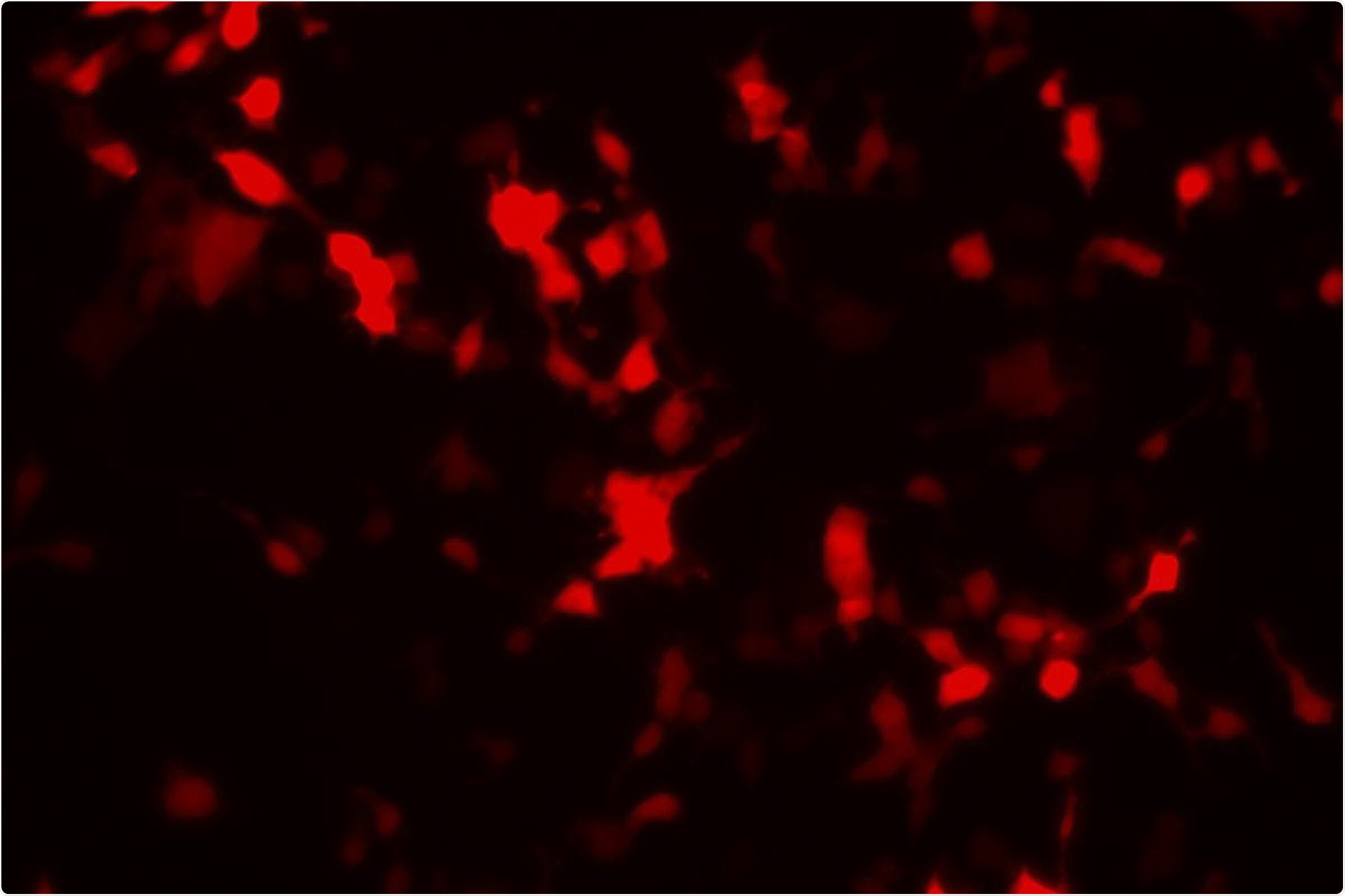Scientists from the University of Virginia School of Medicine have made it simple for researchers to interpret biological processes, follow events within individual cells, solve the mysteries of disease, and develop new treatments, all by making a small change to the color palette.

UVA researchers found that adding a particular amino acid to the green biosensor cells turns them red, making it easier for scientists to understand biological processes. Image Credit: University of Virginia.
Hui-wang Ai and Shen Zhang from the University of Virginia have found an easy and effective way to optimize fluorescent “biosensors” extensively used in medical and scientific research. The biosensor identifies specific targets within cells and makes them glow, thus enabling researchers to control and measure biological events that could not be possible otherwise.
A majority of the fluorescent protein biosensors glow yellow or green; however, Ai and Zhang have found a technique to change the green to red. This also offers huge advantages, apart from making it simple to track multiple targets at once and to take a deeper look into tissues.
This innovative method can convert not only existing biosensors, but also any green biosensors developed in the future. Multicolor and/or multiplexed imaging with fluorescent biosensors cells will thus become widely accessible.”
Hui-wang Ai, PhD, University of Virginia
Lighting the way
Although red biosensors are already available, their green counterparts usually outshine them. Therefore, researchers have been actively looking for ways to change the green color into red, while preserving the advantages of the green sensors and adding new ones, for example, decreasing the possible visual confusion caused by the natural fluorescence of cells and tissues.
Ai and Zhang chanced upon a solution by luck—or “serendipity,” as explained in a new scientific paper. While performing their usual laboratory work, they identified that when a specific amino acid—3-amino tyrosine—was added to the green biosensor, it turns red.
According to them, this is easy to perform and highly effective. The red version retained the dynamic range, brightness, and responsiveness of the green sensor, apart from providing the extra benefits of a red one.
We modified a panel of green biosensors for metal ions, neurotransmitters and cell metabolites. Spontaneous and efficient green-to-red conversion was observed for all tested biosensors, and little optimization on individual sensors was needed.”
Shen Zhang, PhD, University of Virginia
The team tested the optimized biosensor on cells that generate insulin in the pancreas. They could follow the effect of high levels of glucose on the cells, thereby achieving better understanding and new directions to investigate.
The researchers believe that their fast-and-easy sensor upgrade will provide similar advantages to several other researchers and lines of scientific research.
It will have lots of applications, such as acceleration of our understanding of how pancreas controls insulin secretion or how neuronal activity patterns in the brain correlate with complex behavior.”
Hui-wang Ai, PhD, University of Virginia
Source:
Journal reference:
Zhang, S & Ai, H. (2020) A general strategy to red-shift green fluorescent protein-based biosensors. Nature Chemical Biology. doi.org/10.1038/s41589-020-0641-7.